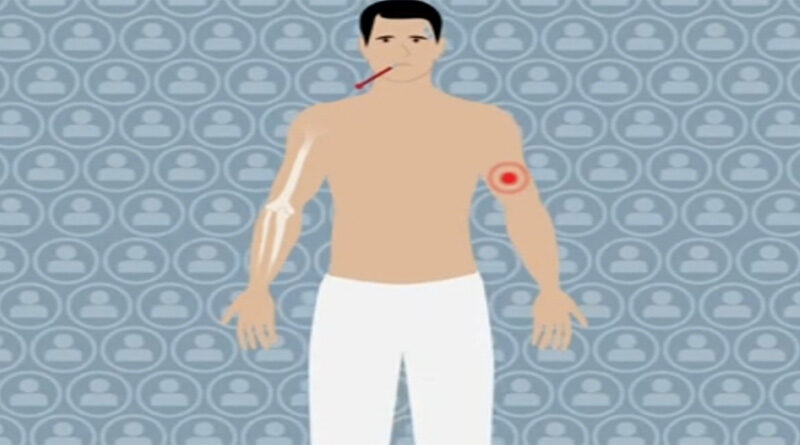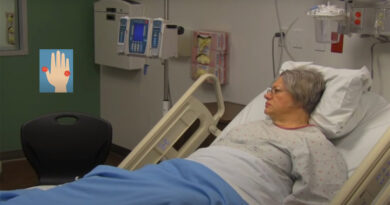What is Anaplasmosis disease?
Last Update on September 28, 2022
| Overview | Transmission | Symptoms | Diagnose | Treatment | Prevention |
1. Overview:
Anaplasmosis is a disease that is spread by the bacteria Anaplasma phagocytophilum . Tick bites, especially from the black-legged tick (Ixodes scapularis) and the western black-legged tick, are the main way that these bacteria are transmitted to humans (Ixodes pacificus).
Fever, headache, chills, and muscle aches are common symptoms of anaplasmosis. The medication of choice for adults and kids of all ages with anaplasmosis is doxycycline.
Anaplasma phagocytophilum is transmitted by black-legged ticks, which also spread anaplasmosis and the bacterium that causes Lyme disease.
2. Transmission of Anaplasmosis:
The bacteria Anaplasma phagocytophilum is the cause of the tick-borne disease anaplasmosis.
- Biting ticks: The main way that A. phagocytophilum is transmitted to individuals is through a tick bite. The black-legged tick (Ixodes scapularis) in the Northeast and Midwestern United States and the western black-legged tick (Ixodes pacificus) on the West Coast are the carriers of the bacteria in the United States.
- Blood donation: A. phagocytophilum has sporadically spread through blood transfusions. The Northeastern and upper Midwestern states are where anaplasmosis cases are most frequently recorded.
3. Symptoms of Anaplasmosis:
Anaplasmosis symptoms generally show one to two weeks after the tick bite that caused the infection.
Most tick bites are painless, and many patients have no memory of being bitten.
If you feel unwell after being bitten by a tick, being in densely forested areas, or being in the woods, where ticks are likely to live, see your healthcare provider.
The following anaplasmosis symptoms can develop during the first stage of the disease (days one through five), according to medical experts:
Early symptoms are:
- Fever
- Chills
- Muscle aches
- Severe headache
- Vomiting
- Diarrhea
- Nausea
- Loss of appetite
Late symptoms are:
- Respiratory failure
- Organ failure
- Bleeding problems
- Death
4. Diagnose anaplasmosis:
- Your doctor may request specific blood tests to check for signs of anaplasmosis or other disorders that present with similar symptoms.
- Results from tests could take many weeks.
- While you wait for test results, your doctor may prescribe medications if they suspect you have anaplasmosis or another tick-borne infection.
Fortunately, there is a quick way for medical professionals to determine whether a patient has anaplasmosis or not. Blood tests are performed to confirm the patient has anaplasmosis and not a related infection, Dr. Parikh explains. This is done after medical professionals have examined all the signs and symptoms.
After spending the day in your garden or on a hike, if you find a tick on you, you might be tempted to put it in a plastic bag and present it to your doctor if you start to feel sick.
While this does not exactly harm you, according to health exports. It could not ultimately be beneficial for you because infectious disease experts might not know what to look for when you present them with a tick. However, if you don’t fully aware of how ticks look, it can be beneficial. In order to confirm the diagnosis, I would still order the bloodwork they clarify.
5. Treatment of Anaplasmosis:
Fortunately, the case fatality rate in the assessment of how many people die from an anaplasmosis infection is rather low. Less than 1% of people with anaplasmosis in the US pass away as a result of illness, according to Health Breaking. To avoid major sickness or death, it’s crucial to seek care as soon as possible.
Once they have determined that you have anaplasmosis, your doctor may advise antibiotics, as they do with other diseases. “Typically, antibiotics are used to treat it. One popular one is doxycycline according to health experts. Doxycycline is frequently used to treat bacterial infections, including those transferred by ticks, mites, sick animals, lice, contaminated water, and food, in addition to those caused by ticks.
According to experts, doxycycline patients typically have speedy recovery People react really swiftly. They start feeling better and their temperature disappears within 48 hours.
While the medication would generally be prescribed for patients with anaplasmosis in its early stages, those who put off visiting a doctor may need more severe treatments. Dr. Parikh cautions that if you let the infection get worse and result in late-stage symptoms like organ failure, you could have to stay in the hospital’s intensive care unit (ICU).
6. Prevention of anaplasmosis:
- Anaplasmosis cannot be prevented by vaccination. Protect yourself from getting bitten by ticks, ticks on your pets, and ticks in your yard to save getting sick.
- Going camping, gardening, or hunting outside will put you in close proximity to ticks because they can be found dwelling in grassy, brushy, or forested surroundings in addition to on animals. Protect yourself, your loved ones, and your pets.
- Ticks can be active throughout the year, but their activity is highest in the hotter seasons (April-September).
However, tick exposure can exist at any time of year; tick activity is highest in the warmer months (April-September). Understand which ticks are most important there.
Before You Go Outdoors:
- Know where to expect ticks
- Treat clothing and gear
- Avoid Contact with Ticks
After You Come Indoors:
- Check your clothing for ticks
- Examine gear and pets
- Shower soon after being outdoors
- Check your body for ticks after going outdoors
Experts say there are several ways to protect oneself from ticks and diseases like Lyme disease and anaplasmosis that are transmitted by ticks in the first place. Exports advise paying attention to what you’re wearing before beginning any exercise, even if it’s just weeding your garden. “Lighter colors are best for apparel.
Ticks are visible; they are brown, black, or deeper in color, he says. He also advises you to tuck your pant legs into your shoes to prevent them from creeping up to the skin of your legs. To prevent ticks, Doctors advise using an insect repellent that contains DEET.
Additionally, he says that one of the greatest methods to safeguard yourself is to regularly check your body for ticks after engaging in outdoor activities. “When you do enter, thoroughly inspect yourself from head to toe for ticks. The risk of becoming sick from it is quite low if you remove it within the first 36 hours.”
There is a particular manner to remove a tick if you see one so as not to spread infection. The doctor advises against following old wives’ tales and against attempting to burn them off. Before attempting to remove it, use some fine-nosed tweezers, go close to the skin’s surface, and carefully clean the area. Avoid tightening the body.
Check your body for ticks after being outdoors:
- Under the arms
- In and around the ears
- Inside belly button
- Back of the knees
- In and around the hair
- Between the legs
- Around the waist



